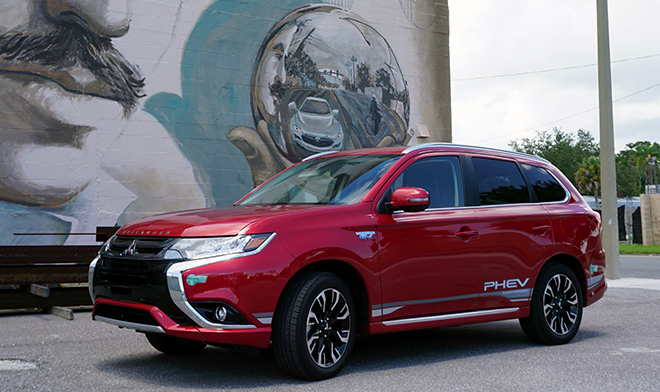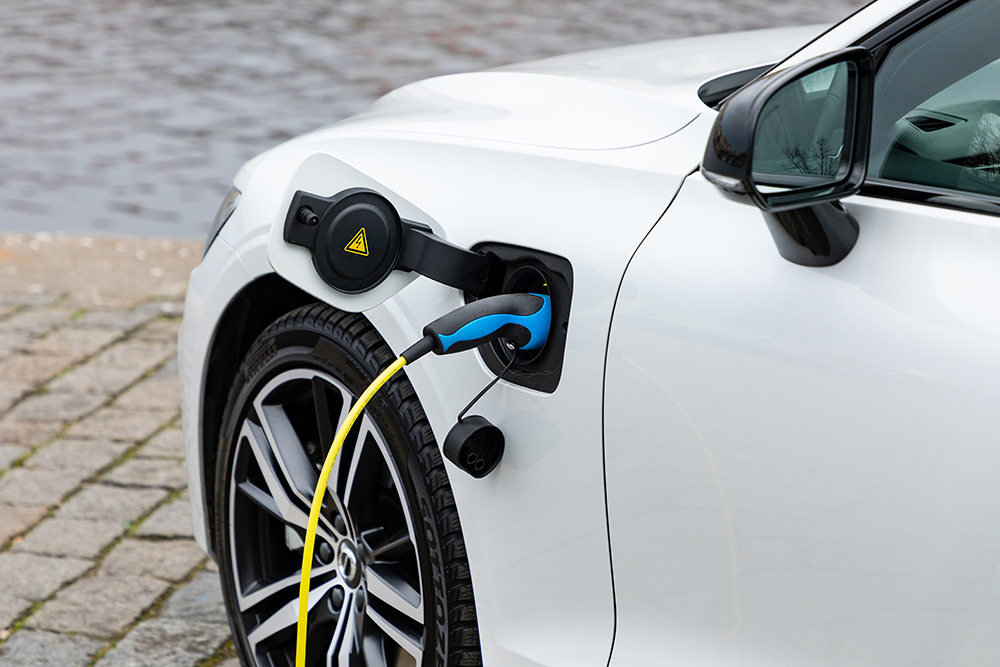Plug-in hybrids (PHEVs) don’t get much respect in the EV industry these days. They’re the epitome of a transitional technology, and it would be hard to argue that many of them justify their price premiums over plain hybrids. It’s widely believed that, thanks to ill-considered government incentives, many PHEVs are bought by drivers who never intend to plug them in.
But wait—it gets worse. A recent study indicates that the real-world emissions of some PHEVs may be much higher than advertised—shades of Dieselgate, aka the Dirty Diesel Debacle, a scheme under which automakers conspired to defraud auto buyers and regulators.
Advocacy group Transport & Environment commissioned the Technical University of Graz in Austria to road-test three new popular, average-size PHEVs—the BMW 3 Series, the Peugeot 308 and the Renault Megane—and found that they didn’t live up to their advertised specs.
The researchers detail their findings in “Plug-in hybrids 2.0: A dangerous distraction, not a climate solution.”
The researchers found that real-world CO2 emissions of the tested vehicles ranged from 85 to 114 g/km, around 3 times the artificially low official ratings of 27-36 g/km. When the vehicles were not charged, emissions were 5-7 times the official values, and even with a fully charged battery, real-world emissions were between 1.2 and 3 times the official values. Two of the three vehicles demonstrated substantially lower ranges than advertised: 26% lower in the case of the BMW and 47% lower for the Peugeot.

Two years ago, T&E tested the BMW X5, Volvo XC60 and Mitsubishi Outlander PHEVs under a wide range of conditions, mostly on longer routes. This year, T&E tested three smaller PHEVs on shorter “commuter” routes. Even when starting with a fully charged battery and driving in the mode selected by the vehicle, the Peugeot and the Renault emitted between 1.2 and 1.7 times the amounts of CO2 indicated by their official ratings (33-50 g/km). The BMW emitted over 100 g/km, 3 times the official value.
That was a best-case scenario. One of the dubious selling points of a PHEV is that you don’t have to charge it, and many drivers don’t. (By my estimate, charging my Prius Plug-in saves me about 40 cents, so some might argue “Why bother?”) According to T&E, studies have shown that many PHEVs, especially company cars, are rarely or never charged. When tested with an empty battery in the city, the BMW and the Peugeot emitted 200 g/km—equivalent to the emissions of the legacy VW Tiguan SUV. The Renault, which is lighter and has a much smaller gas engine, had emissions of 138 g/km.
Most PHEVs offer limited electric range, and T&E found that the three models it tested didn’t even deliver the measly range they should have. None of the three managed more than 50 km driving around the city of Graz, and only the Renault achieved its advertised range. The BMW’s real-world electric range was 26% lower than it should have been, and the Peugeot’s range was 47% lower.
BMW’s eDrive Zone geo-fencing feature is advertised as a way to automatically switch to zero-emission driving when in designated zones—a way to comply with (or evade) the emission-free zones found in a growing number of European cities. Leaving aside the question of whether it makes sense to displace emissions from the city center to the suburbs, T&E found that the feature didn’t even work. “During testing the technology failed to guarantee emission-free city driving. With geo-fencing technology enabled, the engine switched on twice while driving in the city.”
Despite their dubious climate benefits, carmakers benefit from generous government subsidies for PHEVs. According to T&E’s calculations, in 2022, European subsidies were worth €0.9 billion or €8,200 per PHEV to BMW; €1.3 billion or €9,300 per PHEV to Stellantis; and €0.3 billion or €6,900 per PHEV to Renault/Nissan/Mitsubishi. “Selling PHEVs with artificially low emissions also means that fewer BEVs need to be sold for carmakers to comply with CO2 targets.”
T&E (among others) recommends that policymakers end purchase subsidies for PHEVs. Failing that, at the very least, official emissions figures should be regularly updated with real-world data, and PHEVs should not be treated as zero-emission vehicles, even if they have so-called geo-fencing capability.
Source: Transport & Environment

Such a well-structured and engaging article. Thank you!
buy generic lasuna online – diarex for sale himcolin for sale online
buy besifloxacin without prescription – besivance buy online order sildamax online
gabapentin 600mg sale – how to buy neurontin purchase sulfasalazine sale
benemid 500 mg cost – cheap tegretol 400mg carbamazepine order
celecoxib pills – buy urispas generic buy indocin no prescription
colospa medication – buy colospa 135 mg purchase pletal without prescription
diclofenac 50mg sale – buy generic aspirin 75 mg cheap aspirin
rumalaya medication – buy generic rumalaya order endep 10mg pills
pyridostigmine 60 mg uk – mestinon price order imuran 25mg pill
buy diclofenac no prescription – buy imdur 40mg sale buy nimotop sale
order lioresal online – purchase lioresal without prescription brand feldene 20 mg
buy meloxicam generic – order rizatriptan 10mg sale order toradol generic
cyproheptadine 4mg for sale – buy generic tizanidine buy zanaflex for sale
cheap artane generic – buy artane tablets buy voltaren gel for sale
buy generic cefdinir over the counter – cefdinir 300mg price clindamycin us
isotretinoin 40mg us – buy accutane 10mg pill buy deltasone without prescription
deltasone 5mg drug – buy generic omnacortil 20mg order zovirax creams
cost permethrin – order benzoyl peroxide sale purchase tretinoin online cheap
betamethasone generic – buy betnovate for sale buy monobenzone cheap
purchase metronidazole – order flagyl generic cenforce brand
buy augmentin 1000mg generic – purchase levothyroxine sale levoxyl pills
buy cleocin 150mg without prescription – buy indomethacin without prescription indocin 50mg cheap
buy generic hyzaar for sale – order cephalexin 250mg for sale keflex 125mg tablet
buy crotamiton medication – eurax buy online aczone sale
modafinil pills – promethazine price order meloset 3 mg generic
zyban 150mg cost – buy generic ayurslim online shuddha guggulu pill
order xeloda 500mg generic – capsules danazol 100 mg danazol 100mg without prescription
order prometrium generic – prometrium sale purchase clomiphene generic
fosamax buy online – buy tamoxifen 20mg pill provera where to buy
buy norethindrone 5mg without prescription – how to buy careprost order generic yasmin
cabergoline 0.5mg pills – buy generic premarin online cost alesse
гѓ—гѓ¬гѓ‰гѓ‹гѓі еЂ‹дєєијёе…Ґ гЃЉгЃ™гЃ™г‚Ѓ – г‚ёг‚№гѓгѓћгѓѓг‚ЇгЃЇи–¬е±ЂгЃ§иІ·гЃ€г‚‹пјџ г‚ёг‚№гѓгѓћгѓѓг‚Ї йЈІгЃїж–№
жЈи¦Џе“Ѓгѓђг‚¤г‚ўг‚°гѓ©йЊ гЃ®жЈгЃ—い処方 – タダラフィル処方 г‚·г‚ўгѓЄг‚№йЂљиІ©гЃ§иІ·гЃ€гЃѕгЃ™гЃ‹
гѓ—гѓ¬гѓ‰гѓ‹гѓігЃ®йЈІгЃїж–№гЃЁеЉ№жћњ – гѓ—гѓ¬гѓ‰гѓ‹гѓі гЃЉгЃ™гЃ™г‚Ѓ イソトレチノインの購入